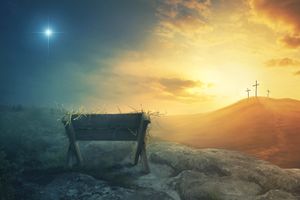One of the greatest hymn writers of all time is Charles Wesley. He was the younger brother of John Wesley, the great gospel preacher of the 18th century. We see Charles’s greatness in a Christmas hymn that he wrote. Here are the lyrics of the first verse.
Let earth and heaven combine,
Angels and men agree,
To praise in songs divine
The incarnate Deity,
Our God contracted to a span,
Incomprehensibly made man.
What is Charles getting at here? To human minds, it is truly beyond our understanding how God became a man, yet remained God: contracted to a span, incomprehensibly made man.
The Son of God is all-powerful, almighty, all-knowing, and all-seeing. The Son of God was there before time began in all eternity with the Father and the Holy Spirit. He was there at creation, speaking the universe into being. Since then, he has upheld the world by his power.
Yet within the time and space he created, and without giving up his deity, he fully and completely became a man.
C. S. Lewis captured something of this in his book, The Last Battle. And at one point he has one of the main characters saying, ‘A stable once had something inside it that was bigger than our whole world.’
This is a paradox, a striking contrast. G. K. Chesterton said, ‘A paradox is a truth standing on its head shouting for attention.’
The coming of the Son of God into the world should shout at us for our attention! I want to focus on five other paradoxes or contrasts connected with the birth of Christ.







